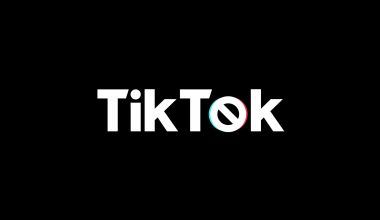Have you ever dreamed of making money from your music on Spotify? You’re not alone! Spotify is one of the largest platforms for music streaming, with millions of users listening every day. The good news is, it’s possible to monetize your song on Spotify step-by-step, and this guide will show you exactly how to do it. Whether you’re an indie artist or a seasoned musician, following these steps can help you turn your passion into income. So, let’s dive in and unlock your music’s earning potential.
How Does Spotify Monetization Work?
Before diving into the steps, it’s essential to understand how Spotify pays artists. Spotify uses a revenue-sharing model where artists earn based on the number of streams their songs get. However, the payout is not direct. Spotify collects revenue from ads and subscriptions and distributes it to rights holders, which can include labels, publishers, and independent artists. The actual amount you earn per stream varies depending on factors like your listener’s location and your deal with a distributor.
Step 1: Create High-Quality Music
First things first, your music needs to be top-notch. Quality is everything on Spotify because you’re competing with millions of other artists. Spend time perfecting your sound. Invest in good equipment or work with professionals to ensure your music sounds polished. Remember, Spotify users won’t come back to your track if it doesn’t stand out.
Step 2: Choose a Digital Distributor
Spotify doesn’t allow you to upload music directly. Instead, you need a digital distributor to get your songs onto the platform. Distributors like DistroKid, TuneCore, CD Baby, and Amuse help you upload your tracks and collect your royalties. When choosing a distributor, compare their pricing, features, and payout terms. Some charge an upfront fee, while others take a percentage of your earnings.
Step 3: Prepare Your Release
Once you’ve selected a distributor, prepare your music for release. This step includes ensuring you have high-quality audio files, an eye-catching album cover, and proper metadata. Metadata includes details like the song title, artist name, and genre, which help Spotify categorize your track and make it discoverable.
Step 4: Register for Royalties
To maximize your earnings, register your song with a performing rights organization (PRO) and a mechanical rights organization. This ensures you receive payments for both performance and mechanical royalties. Popular PROs include ASCAP, BMI, and PRS, depending on your location. Also, sign up for SoundExchange to collect digital performance royalties.
Step 5: Build Your Spotify Profile
A strong artist profile is crucial for building your presence and increasing streams. Claim your Spotify for Artists account to customize your profile, add a bio, upload images, and feature playlists. A professional-looking profile makes listeners more likely to follow you and stream your music.
Step 6: Promote Your Music
Promotion plays a significant role in monetizing your music. Here are some effective ways to get more streams:
- Share your song on social media platforms like Instagram, Twitter, and Facebook.
- Collaborate with influencers or other artists to reach new audiences.
- Use Spotify’s promotional tools like Spotify Ad Studio to run targeted ads.
- Submit your song to Spotify editorial playlists for better exposure.
Step 7: Engage Your Audience
Connecting with your listeners is just as important as creating great music. Respond to comments, post engaging content on social media, and share updates about your music journey. When listeners feel a personal connection, they’re more likely to stream your songs repeatedly.
Step 8: Leverage Playlists
Playlists are a powerful tool for gaining visibility on Spotify. Focus on getting your music added to both official Spotify playlists and user-generated ones. Use platforms like SubmitHub or PlaylistPush to pitch your tracks to curators. You can also create your own playlists featuring your music along with similar tracks to keep listeners engaged.
Step 9: Analyze Your Performance
Spotify for Artists provides valuable data about your streams, listeners, and demographics. Use this information to identify which songs are performing well and understand your audience better. This insight can guide your future marketing strategies and help you optimize your earnings.
Step 10: Expand Your Revenue Streams
While Spotify streams are a great income source, don’t stop there. Consider selling merchandise, booking live performances, or offering exclusive content through platforms like Patreon. By diversifying your revenue streams, you can create a sustainable income from your music career.
Step 11: Stay Consistent
Consistency is key in the music industry. Keep releasing new tracks, engaging with your audience, and promoting your music. The more active you are, the more likely your music is to gain traction on Spotify.
Conclusion
Monetizing your song on Spotify step-by-step isn’t just about uploading your music and waiting for streams to roll in. It’s about creating high-quality tracks, strategically promoting them, and engaging with your audience. By following these steps, you can turn Spotify into a significant income source while growing your music career. So, start today and take your first step toward monetizing your music on Spotify.
For further reading, explore these related articles:
- Everything You Need to Know About ISRC Codes for Bands
- How to Be a Spotify Artist
- What is A&R in Music? A Complete Guide to Understanding This Key Role
For additional resources on music marketing and distribution, visit DMT Records Private Limited.






